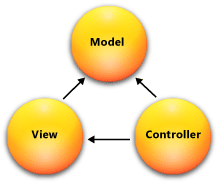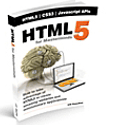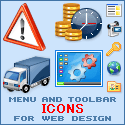ArticlesPosted By:
P.R.S
7/29/2012 12:00:00 AM
language:
Programming
The Model-View-Controller (MVC) architectural pattern separates an application into three main components: the model, the view, and the controller. The ASP.NET MVC framework provides an alternative to the ASP.NET Web Forms pattern for creating Web applications. The ASP.NET MVC framework is a lightweight, highly testable presentation framework that (as with Web Forms-based applications) is integrated with existing ASP.NET features, such as master pages and membership-based authentication. The MVC framework is defined in the System.Web.Mvc assembly.
MVC design pattern

MVC is a standard design pattern that many developers are familiar with. Some types of Web applications will benefit from the MVC framework. Others will continue to use the traditional ASP.NET application pattern that is based on Web Forms and postbacks. Other types of Web applications will combine the two approaches; neither approach excludes the other. The MVC framework includes the following components:
The MVC pattern helps you create applications that separate the different aspects of the application (input logic, business logic, and UI logic), while providing a loose coupling between these elements. The pattern specifies where each kind of logic should be located in the application. The UI logic belongs in the view. Input logic belongs in the controller. Business logic belongs in the model. This separation helps you manage complexity when you build an application, because it enables you to focus on one aspect of the implementation at a time. For example, you can focus on the view without depending on the business logic. The loose coupling between the three main components of an MVC application also promotes parallel development. For example, one developer can work on the view, a second developer can work on the controller logic, and a third developer can focus on the business logic in the model.
|
Share Your Source Code or Article
Do you have source code, articles, tutorials, web links, and books
to share? You can write your own content here. You can even have your
own blog.
Submit now... SponsorPopular Source Code (Today)Random Source Code |
| |
Professionallearn.com |
[ Log On ] |





